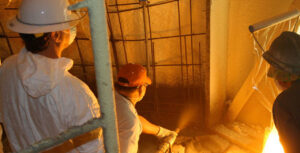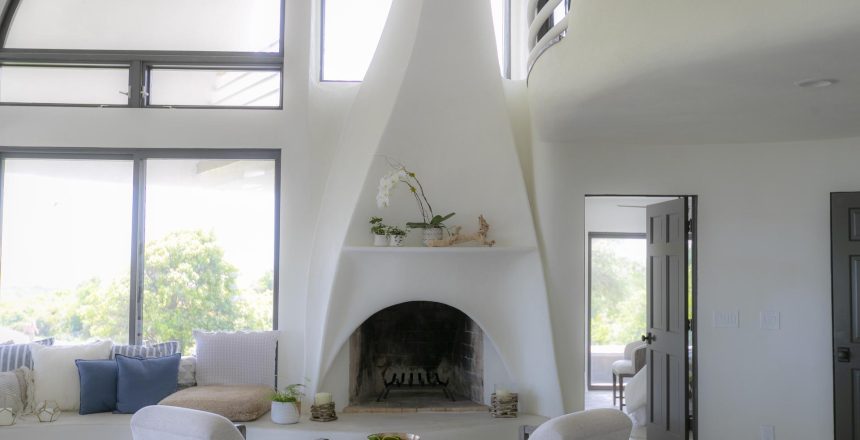Hot summer days and cold winter nights both mean one thing: high energy costs. If you’re a homeowner, you’re likely watching your budget in these extreme weather conditions to make sure you’re not breaking the bank to stay comfortable. Conventional homes use several construction and technology strategies to reduce costs and increase energy efficiency, but nothing quite compares to the energy efficiency of concrete dome construction.
The amazing thing about concrete domes, though, is that the solution doesn’t lie in complexity. Instead, their simplicity provides their energy cost savings. This specialized construction process makes these concrete dome homes some of the most efficient and inexpensive homes to own.
The Foundation of Concrete Dome Construction

Starting from the ground up, concrete dome construction is different from most other construction. The concrete ring foundation is a key component of the energy efficiency of the overall structure. With several inches of concrete below and just above grade, heat transfer is generally low to begin with.
However, some dome foundation construction processes go even further in creating a clean break between outside and inside temperature differences. Using a high-density polyurethane spray foam for insulation around the perimeter of the ring foundation, up to 10 inches below grade, allows these concrete foundations to maintain a stable temperature that varies by only a couple of degrees. When a structure starts with so little fluctuation in its foundation, the rest of the building has a far better chance of remaining warm in the winter and cool in the summer.
Protection from Outdoor Extremes
On top of the foundation, concrete domes start with a thick PVC-coated nylon or fabric membrane called an airform. Not only do these airforms constitute the framework of the dome’s shape and size, but they also act as a barrier from outside elements. They are air- and watertight, which eliminates unwanted moisture transfer and temperature leaks.
Once the airform is installed, it provides a protective layer against the elements, even without additional materials added, such as brick, stone, or paint. Airforms require minimal cleaning and repairs, and they can deflect extreme heat and wind without suffering damage.
Insulated for Every Season
 Inside the airform, concrete dome construction materials are even more crucial to the temperature stability and energy efficiency of these domes. The most important material is the spray polyurethane foam insulation that coats the airform’s interior. Application is often several inches thick, and this dense foam does not allow water or air to transfer in or out of the dome.
Inside the airform, concrete dome construction materials are even more crucial to the temperature stability and energy efficiency of these domes. The most important material is the spray polyurethane foam insulation that coats the airform’s interior. Application is often several inches thick, and this dense foam does not allow water or air to transfer in or out of the dome.
This insulation works so well that dome homeowners frequently see savings of 50 percent or more on their year-round energy bills, whether they experience the hot summers of Texas or the frigid winters of Minnesota. The barrier is so energy efficient that some even report being able to heat their homes with incandescent bulbs alone.
Inert Materials in Concrete Dome Construction
Low energy bills are incredible, no doubt, but concrete domes also offer a green alternative to conventional construction through the use of inert materials. The concrete, rebar, and foam insulation are virtually indestructible, and the airform can last for decades with only a little care and maintenance.
Conventional materials like wood framing, drywall, and composite siding are susceptible to rot, pest infestations, and damage from wind and temperature changes. With no moisture transfer and an almost completely stable temperature from season to season, concrete domes eliminate the need for continuous replacement of conventional construction materials. In fact, their lifespan may be centuries-long, rather than decades.
A Tiny Energy Footprint
As they are typically built, concrete domes already offer serious advantages over most homes and buildings from the start. But some owners take these domes even further with added green components that allow them to completely ditch the grid. With such a small energy footprint to start with, some owners can easily connect their homes to solar panels that completely cover their energy needs. A typical home can add solar power, but that power doesn’t usually compensate for the energy loss that conventional building materials and designs encounter. In a dome home, it’s not only possible, it’s easy.
Wondering if your next project could be a dome home? Talk to our KingDome Builders team to learn about these impressive structures! We even have a model home on our property that is available for tours. We are passionate about the possibilities of concrete domes, and we want to share that passion with you. Contact us today and set up an appointment to see our dome home and talk about what it takes to build your own super-efficient dome home!



